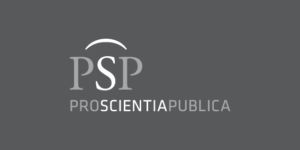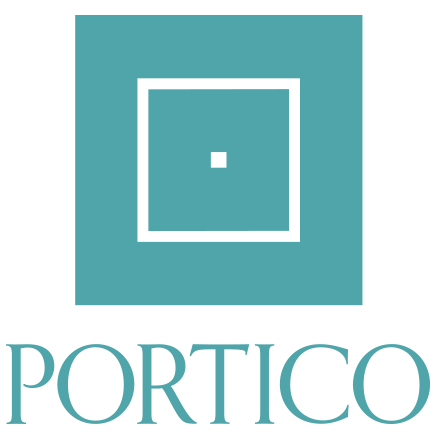Ethnomathematics: Ideofacts, Sociofacts, and Artefacts of Mathematical Context in Yogyakarta
DOI:
https://doi.org/10.15503/jecs2025.2.451.479Słowa kluczowe:
artefact, ethnomathematics, ideofact, mathematical context, sociofactAbstrakt
Aim. The purpose of this study is to explore ideofacts, sociofacts, and artifacts that have the potential to serve as contexts for teaching mathematics in Yogyakarta.
Methods. This qualitative research employs an ethnographic approach. The study investigates potential locations including the Kotagedhe Mataram Mosque, Prambanan Temple, and the Planting Plantation System in Yogyakarta. Instruments used include interview guides, observation sheets, and artifact exploration Tables. Key informants were selected at each research site to provide ethical insights from an emic perspective, resulting in dialectical data. To ensure data validity, the researchers sutilised data triangulation (interviews, observations, and documentation) and conducted focus group discussions (FGDs) with cultural experts and ethnomathematicians to review and discuss the findings.
Results. The findings indicate that each location contains mathematical content applicable to teaching, particularly in geometry (both two-dimensional and three-dimensional), pre-algebra (multiplication), and number theory (least common multiple).
Conclusion. The study demonstrates how cultural contexts, such as the Kotagedhe Mataram Mosque and Prambanan Temple, can be integrated into elementary mathematics education, illustrating mathematical concepts such as spatial geometry, symmetry, and multiplication. It identifies potential learning tools, including folded paper, flat-shaped paper, LEGO, and Augmented Reality, to enhance the teaching of these concepts. Additionally, a Hypothetical Learning Trajectory (HLT) is developed to guide the learning process based on these cultural contexts and tools.
Pobrania
Bibliografia
Ahsani, L. A., Berthania, N. E., Pramana, D. R, Dewi, A. P. K., & Asy Syifa, U. N. (2022). Development of augmented reality based learning media on the topic of spatial geometry for elementary school students. Journal of Software Engineering, Information and Communication Technology (SEICT), 3(2), 137–148. https://doi.org/10.17509/seict.v3i2.59654
Altakhayneh, B. (2020). The impact of using the LEGO education program on mathematics achievement of different levels of elementary students. European Journal of Educational Research, 9(2), 603–610. https://doi.org/10.12973/eu-jer.9.2.603
Bestra, L., Rahayu, C., & Indrayati, H. (2022). Problem Based Learning (PBL) using Lego in presenting data. Numerical: Jurnal Matematika Dan Pendidikan Matematika, 6(2), 211-218. https://journal.iaimnumetrolampung.ac.id/index.php/numerical/article/download/2596/1108/11526
Burkman, J. B. (2013). Sound off!: Least common denominators and the common core. The Mathematics Teacher, 106(7), 488–490. https://doi.org/10.5951/mathteacher.106.7.0488
Cimen, O. A. (2014). Discussing ethnomathematics: Is mathematics culturally dependent? Procedia - Social and Behavioral Sciences, 152, 523-528. https://doi.org/10.1016/j.sbspro.2014.09.215
Creswell, J. W. (2014). Research design: Qualitative, quantitative and mixed methods approaches (4th ed.). SAGE.
de Walle, J. A. Van, Karp, K. S., & Bay-Williams, J. M. (2016). Elementary and middle school mathematics: teaching developmentally (9th ed.). Pearson Education Limited.
Deliyianni, E., Gagatsis, A., Elia, I., & Panaoura, A. (2016). Representational flexibility and problem-solving ability in fraction and decimal number addition: A structural model. International Journal of Science and Mathematics Education, 17(2), 342–367. https://doi.org/10.1007/s10763-015-9625-6
Duatepe-Paksu, A., Pakmak, G. S., & Iymen, E. (2012). Preservice elementary teachers’ identification of necessary and sufficient conditions for a rhombus. Procedia - Social and Behavioral Sciences, 46, 3249–3253. https://doi.org/10.1016/j.sbspro.2012.06.045
Faiziyah, N., Sutama, Sholihah, I., Wulandari, S., & Yudha, D. A. (2020). Enhancing creativity through ethnomathematics. Universal Journal of Educational Research, 8(8), 3704–3710. https://doi.org/10.13189/ujer.2020.080850
Fauzi, L. M., Hanum, F., Jailani, J., & Jatmiko, J. (2022). Ethnomathematics: Mathematical ideas and educational values on the architecture of Sasak traditional residence. International Journal of Evaluation and Research in Education, 11(1), 250–259. https://doi.org/10.11591/ijere.v11i1.21775
Garderen, D. Van, & Montague, M. (2003). Visual-spatial representation, mathematical problem solving, and students of varying abilities. Learning Disabilities Research and Practice, 18(4), 246–254. https://psycnet.apa.org/doi/10.1111/1540-5826.00079
Geertz, C. (1973). The interpretation of cultures: Selected essays. Basic Books, Inc.
Hwang, W.-Y., Nurtantyana, R., Purba, S. W. D., Hariyanti, U., & Suprapto. (2023). Augmented reality with authentic geometrygo app to help geometry learning and assessments. IEEE Transactions on Learning Technologies, 16(5), 769–779. https://doi.org/10.1109/TLT.2023.3251398
Ilukena, A. M., Utete, C. N., & Kasanda, C. (2020). Strategies Used by Grade 6 Learners in the Multiplication of Whole Numbers in Five Selected Primary Schools in the Kavango East and West Regions. International Education Studies, 13(3), 65. https://doi.org/10.5539/ies.v13n3p65
Kosko, K. W. (2019). Third‐grade teachers’ self‐reported use of multiplication and division models. School Science and Mathematics, 119(5), 262–274. https://doi.org/10.1111/ssm.12337
Maulyda, M. A., Sugiman, S., Wuryandani, W., & Purnomo, Y. W. (2023). How Do Prospective Teachers Find Number Patterns Based on the Laws of Proximity, Closure, and Similarity in a Problem-Solving Activity? Acta Scientiae, 25(5), 275–302. https://doi.org/10.17648/acta.scientiae.7770
Nath, S., & Szücs, D. (2014). Construction plays and cognitive skills associated with the development of mathematical abilities in 7-year-old children. Learning and Instruction, 32, 73–80. https://doi.org/10.1016/j.learninstruc.2014.01.006
Partanen, A. M. (2011). Challenging the school mathematics culture: Ethnographic teacher research on social and sociomathematical norms [Doctoral dissertation, University of Lapland]. Lapland University Press.
Pavlovičová, G., Bočková, V., & Laššová, K. (2022). Spatial ability and geometric thinking of the students of teacher training for primary education. TEM Journal, 11(1), 388–395. https://doi.org/10.18421/TEM111-49
Prahmana, R. C. I. (2021, October 20). Ethno-realistic mathematics education: The promising learning approach in the city of culture [Conference presentation]. 2nd Science, Technology, Education, Arts, Culture, and Humanity 2021 and 8th Southeast Asian Design Research 2021 International Conference, Surabaya, Indonesia. https://doi.org/10.13140/RG.2.2.20679.83362
Prahmana, R. C. I., Yunianto, W., Rosa, M., & Orey, D. C. (2021). Ethnomathematics: Pranatamangsa system and the birth-death ceremonial in Yogyakarta. Journal on Mathematics Education, 12(1), 93–112. https://doi.org/10.22342/JME.12.1.11745.93-112
Rico-Bautista, N. A., Rico-Bautista, D. W., & Medina-Cárdenas, Y. C. (2019). Collaborative work as a learning strategy to teach mathematics incorporating robotics using led godt education system and fischertechnik in seventh graders at the school Isidro Caballero Delgado in Floridablanca Santander Colombia. 5th International Meeting for Researchers in Materials and Plasma Technology (5th IMRMPT) 28–31 May 2019, San José de Cúcuta, Colombia. Journal of Physics: Conference Series, 1386(1), 1–7. IOP Science. https://doi.org/10.1088/1742-6596/1386/1/012146
Sintema, E. J., & Marban, J. M. (2021). Pre-service teachers’ knowledge of identifying and clearing pupils’ misconceptions about inverse and composite functions via Vignettes. Eurasia Journal of Mathematics, Science and Technology Education, 17(1), em1930. https://doi.org/10.29333/ejmste/9378
Sukoriyanto, S., Nusantara, T., Subanji, S., & Chandra, T. D. (2016). Students thinking process in solving combination problems considered from assimilation and accommodation framework. Educational Research and Reviews, 11(16), 1494–1499. https://doi.org/10.5897/ERR2016.2811
Susiana, Caswita, & Noer, S. H. (2020). Ethnomathematics: Mathematical concepts in Tapis Lampung. Journal of Physics: Conference Series, 1581, Article 012056. https://doi.org/10.1088/1742-6596/1581/1/012056
Sutarto, Dwi Hastuti, I., Listiawan, T., Sutopo, Komariah, A., & Dabirnia, M. (2021). Fourth-Grade Primary School Students’ Misconception on Greatest Common Factor and Least Common Multiple. Education Research International, 2021. https://doi.org/10.1155/2021/6581653
Tenz, J. M. (1893). Paving stones of the temple. Palestine Exploration Quarterly, 25(4), 330. https://doi.org/10.1179/peq.1893.25.4.330
Triyani, S., Ilma Indra Putri, R., & Darmawijoyo. (2012). Supporting student’s ability in understanding Least Common Multiple (LCM) concept using storytelling. IndoMS Journal on Mathematics Education, 3(2), 151–164. http://dx.doi.org/10.22342/jme.3.2.572.151-164
Umbara, U., Wahyudin, W., & Prabawanto, S. (2021). Exploring ethnomathematics with ethnomodeling methodological approach: How does cigugur indigenous people using calculations to determine good day to build houses. Eurasia Journal of Mathematics, Science and Technology Education, 17(2), em1939. https://doi.org/10.29333/EJMSTE/9673
van den Heuvel-Panhuizen, M. (2020). International reflections on the Netherlands didactics of mathematics. Springer Nature.
van den Heuvel-Panhuizen, M., & Drijvers, P. (2014). Realistic mathematics education. In Encyclopedia of mathematics education (pp. 521–525). Springer Netherlands. https://doi.org/10.1007/978-94-007-4978-8_170
Vojkuvkova, I. (2012). The van Hiele model of geometric thinking. Annual Conference of Doctoral Students. In J. Šafránková & J. Pavlů (Eds.), WDS'12 Proceedings of Contributed Papers. MATFYZPRESS. (pp. 72–75). https://physics.mff.cuni.cz/wds/proc/pdf12/WDS12_112_m8_Vojkuvkova.pdf
Whitelam, S., Tamblyn, I., Garrahan, J. P., & Beton, P. H. (2015). Emergent rhombus tilings from molecular interactions with m-fold rotational symmetry. Physical Review Letters, 114(11), Article 115702. https://doi.org/10.1103/PhysRevLett.114.115702
Williams, K., Igel, I., Poveda, R., Kapila, V., & Iskander, M. (2012). Enriching K-12 Science and Mathematics Education Using LEGOs. Advances in Engineering Education, Summer, 3(2)1–27.
Wong, M., & Evans, D. (2007). Improving basic multiplication fact recall for primary school students. Mathematics Education Research Journal, 19, 89–106. https://doi.org/10.1007/BF03217451
Yosopranata, D., Zaenuri, & Mashuri. (2018). Mathematical connection ability on creative problem solving with ethnomathematics nuance learning model. Unnes Journal of Mathematics Education, 7(2), 108–113. https://doi.org/10.15294/ujme.v7i2.25399
Pobrania
Opublikowane
Numer
Dział
Licencja
Prawa autorskie (c) 2025 Sugiman Sugiman, Ahmad Fauzan, Mohammad Archi Maulyda, Rahmah Johar, Lathiful Anwar

Utwór dostępny jest na licencji Creative Commons Uznanie autorstwa 4.0 Międzynarodowe.
CC-BY
Authors retain copyright and grant the journal right of first publication with the work simultaneously licensed under a Creative Commons Attribution License that allows others to share the work with an acknowledgement of the work's authorship and initial publication in this journal. All authors agree for publishing their email adresses, affiliations and short bio statements with their articles during the submission process.


